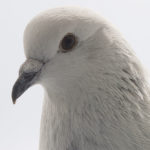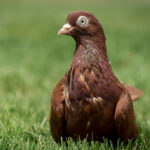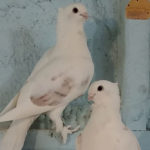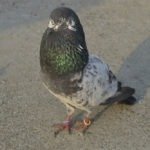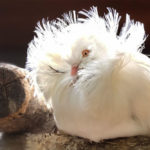Giant Runt pigeons are one of the most common breeds of pigeon, and they are now mostly found in the US. This breed is probably most well known for its large size in comparison to other types of pigeon.
It is also a suitable breed to use for the production of squabs. Although the word runt often has negative connotations, this does not apply to the pigeon.
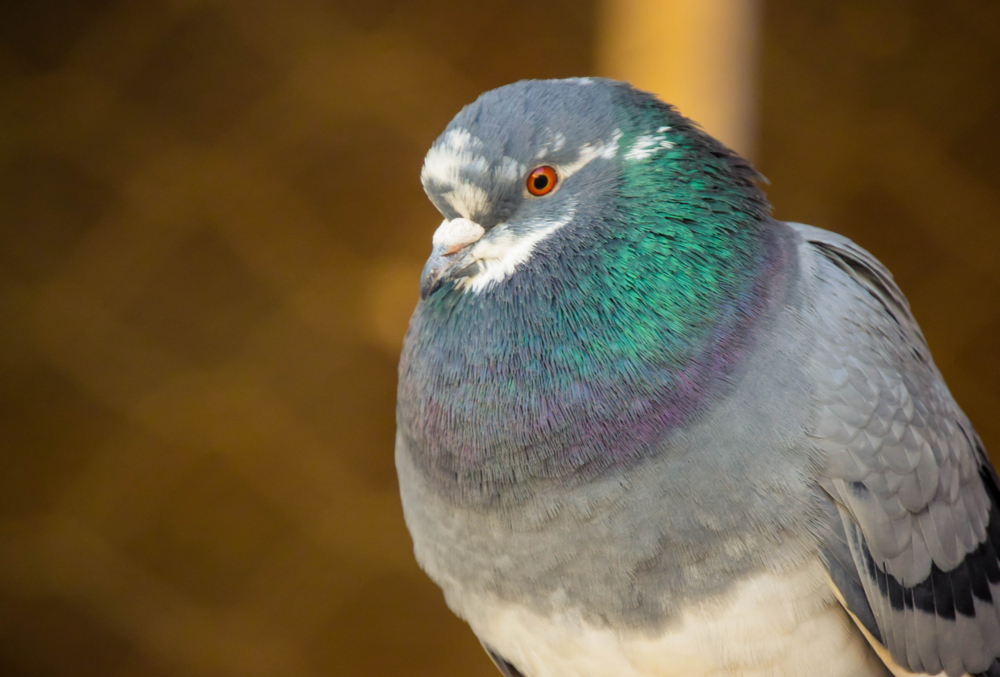
Originally, the word run goes back to countries like Spain and France, and the word actually meant plain or common. So, when this bird is used to describe this breed of pigeon, it is not referring to any sort of disability or defect in the breed.
This is an excellent breed of pigeon to own, but there are some things that you should know about this first.
In this article, we are going to tell you everything that you need to know about the giant runt breed of pigeon. We are going to take a look at their origin, appearance, and care requirements, as well as how to breed them and house them properly. Just keep reading to find out more.
Where Do Giant Runt Pigeons Come From?
The giant runt pigeon is actually one of the oldest and biggest domestic breeds of pigeon, and it has a strong reputation for squab production. This is a trait that makes them stand out as a species.
This breed of bird started out as a pigeon breed that dates back as far as the Roman Times.
During the first century AD, Pliny the Elder actually referred to a big pigeon breed, and it is thought that he was referring to the giant runt. The visual representation of this pigeon is carved into St Peter’s Basilica in Rome, so it is thought that these birds were quite popular in Italy.
These birds were originally bred in France and Spain, and in these areas, this breed was called the Roman Pigeon. The exact arrival of the giant runt pigeon in the US is not known, but there is evidence to suggest that the bird was in an exhibition in Philadelphia in 1873.
Breeders in America made it their mission to exaggerate the defining characteristics of this breed, which is why they proceeded to cross breed the giant runt with other types of pigeons. They wanted to create a pigeon breed that was wider, yet more compact, which would make it more powerful with its bigger body mass.
This broader bird would have had more meat on it, which is why this was the goal through breeding.
Pigeon meat is not as popular today as it has been in the past, but there are some breeders that still produce these birds to sell as food. In modern times, the giant runt is a breed of pigeon that is known for being both gentle and regal.
What Does the Giant Runt Pigeon Look Like?
One of the main things that makes the giant runt pigeon stand out from other pigeons is its wider body type and overall denser mass.
However, just like with the majority of other pigeons, there are a set of standards that are in place to describe these birds. These are considered to be important characteristics when it comes to what the giant runt pigeon looks like.
The Body
The body of a giant runt pigeon should be stout, and it should also feature a round chest and shoulders that are broad. These birds should be quite large in size, yet they should still appear neat. They typically weigh between 1 and 1.2 kgs, but they can weigh more than this at times.
The Head
The head of this pigeon breed should be both large and broad, and the top of their skulls should neither be flat or rounded like some other pigeons. They tend to have oval shaped heads, and the backs of their skulls are usually well developed.
The Beak
Giant runt pigeons have broad beaks, which is typically the main characteristic of this pigeon breed. Their beaks are also quite thick, and they are usually black in color with a little tint of blue.
Eyes
The eyes are usually quite clear and bright if the bird is healthy, and they are always a pearl color unless the bird is white. White giant runt pigeons will have bull color eyes.
Neck
When it comes to the giant runt pigeon, you can expect to see a medium neck length that doesn’t have a gullet. It would appear to be broad and full, especially nearer the breast. Their feathers in this area are typically full.
Wings
They have relatively long wings, and the width of them is in proportion to the west of their body. The wings are usually folded closer to the body, and they will wrap around the rump of the bird when they are in flight.
Back
These birds are known for their long backs and broader shoulders, and they appear straight if you were to look at them from their sides. The feathers that are on their backs should be both long and thick.
Tail
The giant run has a wedge shaped tail that will have the same width as the body, and it typically follows on from the sweep of their backs. The tail should not drag on the ground when the bird is walking.
Color
Originally, these birds used to have quite a neutral color, but today, they can range anywhere from blue to silver, yellow, black, white, grizzle, red, or dun.
Giant Runt Pigeon Personality
If you’re thinking about getting yourself a giant runt pigeon, you might be interested to learn more about its general personality to ensure that this is a breed of bird that you are interested in and will be able to look after.
These birds are very big in size in comparison to normal pigeons, which means that they are not the best at flying. They will be able to fly to perches and low targets, but they are not known for flying for long distances.
Like various other breeds of pigeon, it is difficult to say exactly what their personality will be like, as they are all very different, just like people are. Although these birds have been known to enjoy company at times, they don’t particularly like to be touched or held. They much prefer to keep their distance from people.
However, with that being said, if you interact with them from a young age, then they will become much more comfortable with being handled as they get older. Giant runt pigeons with this kind of background are highly likely to be more fearless.
How To Breed Giant Runt Pigeons
Breeding giant runt pigeons is not always the easiest of tasks, and it can be quite challenging at times. The older that the bird is, the harder reproduction becomes, and they are typically classed as old age birds at the age of 5 years old.
The main thing to ensure if you want to breed these birds is that they are being fed high quality food, as this will encourage fertility. You should also ensure that these birds have access to sunlight.
You should also know that giant runt pigeons are not the best parents as they can be quite clumsy and they have even been known to step on eggs accidentally.
How To Care For A Giant Runt Pigeon
You will need to take great care of these pigeons. They should be housed in a large cage outdoors that is big enough for the number of pigeons that you will place inside of it. In some climates, they will need to live indoors.
You should also ensure that their is high up and that there is enough room for the birds to fly short distances. They should also be allowed to fly outside for at least 2 hours a day.
It is also really important that you keep the pigeon’s living area clean, and you will need to clean it daily to ensure that your bird can remain happy and healthy.
The floor of the cage or loft should be covered with a flat and comfortable surface, and you will need to provide them with fresh water every day.
As well as this, you should feed them commercial bird food as it will contain all of the nutrients that they need. They shouldn’t be fed an exclusively seed based diet, as it won’t provide them with enough calcium.

